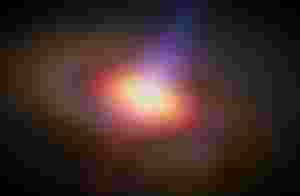
"#Black_Hole"
#The_Cosmological_Demon.
★ #Accraction_Disk: When a star's supernova explodes, the core turns into a black hole, but the explosives are scattered around it. At one point, those objects begin to rotate around the center of the black hole. The objects rotate in a circular motion. As they rotate, they move inside the black hole. Their rotational speed around the black hole is so fast and so fast that these objects collide with each other a lot. And because of this collision they become unimaginably hot and as the temperature rises they start emitting light. A disk-like structure formed around a black hole is called '#acrection_disk'. It is so hot that if the mass of an acceleration disk formed around a supermassive blackhole is one thousand times the mass of the Sun, the maximum temperature there would be one million kelvins. Saturn's ring. Like a disc that revolves around Saturn. The difference is that Saturn's mass or attraction is black. Unlike Kohl, so the objects in his ring are not falling inside him, as is the case with black holes.
★ # Ergosphere: Not only does a rotating black hole ultimately twist spacing, it also rotates the spatial space around it due to the rotation of the black hole (in Einstein's general theory of relativity it is called '#frame_dragging'). However, the rotation of space adjacent to the black hole is maintained up to a certain distance. The rotation of the adjacent space at a certain distance from the event horizon of the black hole is maintained very well. ) This region is called the '# ergosphere'. It is thought that this ergosphere is responsible for the formation of the accretion disk. Because, whenever gaseous objects come to this region, the rotating space with them rotates like a disc. The higher the speed, the larger the area of the ergosphere.

If you give an example, I hope the matter will be clear to you. Suppose, you turn a football as fast as a latim. The more the wind blows, the more the wind blows. The more the football rotates, the more you feel the wind. If you notice another thing, the farther you move your hand away from the football, the less the feeling of wind will be. After a certain distance, the wind will be felt. No. If you rotate the football at low speed, you can feel the wind up to a very short distance, but if you rotate it at high speed, you can feel the wind even if you hold your hand from a considerable distance. As far as we can feel the wind for the speed of the football, in the case of black holes the same is true for the speed of its rotation, the space for its rotation is also rotating for a certain distance. The region is the #Ergosphere.
When the football is rotating, put your hand towards its upper pole point and you will not get air. But if you slowly bring your hand from the pole towards the center of the ball, that is, towards the equatorial region, you will see the distance of the wind sensation gradually increasing. The equatorial region rotates much faster than the pole of the ball, and the higher the velocity, the farther the wind can be felt. For the same reason, the black hole has an ergosphere at its pole point, but slowly swells towards the equatorial region. The shape is like that of an orange. The velocity of rotation along the equator is greater than that of the pole, so the space there will continue to revolve far away. No object in this atmosphere can actually remain still, revolving around a black hole at high speed.
★ #relativistic_jet: He cannot absorb all the gases and substances near the black hole when he starts to absorb them. In a special process, some substances accelerate rapidly and flow towards the two polar regions of the black hole. As they move, there is a lot of collision, and this changes their temperature and they are in ionized state due to the effect of temperature. And from that pole they throw those substances into space with tremendous force. It's as if light is emanating from two poles of a black hole ৷ not really light.
The idea is that when black holes rotate at high speeds, they have a reaction to the motion of the adjacent accretion disk objects, and a force is generated that drives some of the disk's objects toward the pole of the black hole. The length of the relativistic jet that is created in this way can be thousands to millions of light years. The objects thrown are called '#relativistic_jet' because they travel at speeds close to the light. However, not all black holes have this jet.
★ # photon_sphere: There is a place very close to the black hole but far from the event horizon where gravity becomes so strong that when light falls on it like any other ordinary object, it is forced to revolve around the center of the black hole. When you enter this orbit, there is no way for light except to orbit a black hole. This area is called '#photon_sphere'. The most interesting thing about this area is that if you stand straight in this area and look straight ahead, you will see the back of your head in front of you Because the light from the back of your head travels in a circle around the black hole, it will come in front of you, and as a result you will see it right in front of you! Normally, the photonsphere of a black hole is divided into two parts, one relatively outside and the other relatively inward. The speed of the parts is also opposite to each other.
#Blackhole_types ★
When we classify an object, we classify it based on some of its basic properties. For example, in the case of a star, its temperature, the nature of the radiation emitted from the surface, its mass, its age, etc., we can know only three basic properties of a black hole. Angular momentum and charge. There are some types of black holes depending on the mass and angular momentum.
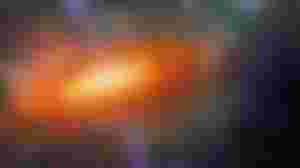
There are four main types of black holes based on mass
1. # micro_blackhole.
2. #stellar_or_stellar_blackhole
3. # Intermediate_Mass_Blackhole
4. #supermassive_blackhole
★ 1. #Micro_Blackhole: They are also called #Primordial_Black_hole or Primitive Black Hole. Also called #Miniature_Black_Hole. In fact, they do not exist, because they have not been seen. However, the idea is that they existed once. Creation, however, is not like other backholes. They were not born from the wreckage of a star. It is said that they were born right after the creation of the universe. When the universe was very young, the density of objects in it was enormous. Very low in comparison. And this density was not evenly distributed everywhere. Somewhere it was very high, that place was quite hot, somewhere or other it was less than that, and relatively less hot. The mass of some places in relatively dense regions is compressed by the effect of gravitational force. Black holes are thought to have been born. British physicist Stephen Hawking calculated that they could weigh as much as 10 ^ 14 kg, which is less than the mass of a dwarf planet, or in many cases asteroids, but this mass year The formation took place in a very small space, approximately a few millimeters to a few femtometers. And that's why they turned into black holes. For example, if our moon were turned into a Schwarzschild radius, it would be like a Miniature Black Hole. .1 mm.
★ 2. # stellar_blackhole: This type of blackhole is formed by the contraction of the remaining core after the supernova explosion of a monstrous mass star, which was mentioned in the previous episode. They can absorb the gas, dust and even the stars around it and increase their mass. They are scattered in the Milky Way galaxy like all other stars. In other words, they can be seen in the position of ordinary stars.
★ 3. # Intermediate_Mass_Blackhole: The mass of such black holes is more than the mass of stellar black holes but less than that of supermassive black holes.
# First, when in a mass of massive or monstrous mass, stars with a mass of more than 30 to 100 solar masses are formed by core contraction after a hypernova explosion at the end of life.
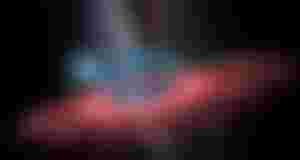
(# Hypernova is a stellar explosion similar to a supernova, but the difference is that a hypernova emits 100 times more energy than the energy emitted in a supernova explosion. Because the larger the mass of the star, the greater the pressure at its center. The more energy it throws away, the more massive a star is, the stronger its explosion, and the greater the mass, the greater the mass of the core. The greater the mass of the core, the greater the gravitational contraction, resulting in the formation of black holes. )
# Second, if a star with a moving molecular mass collides in a dense region of a star cluster, the collision of two stars explodes and their two cores combine to form such a blackhole. , Collisions are very common due to the high density of stars)
#supermassive_blackholes: These are the largest type of blackholes in the universe. They are usually millions to billions of times larger than the Sun, and have a radius of 12 million km. How they originated is not yet clear to scientists. Later, during the formation of galaxies, gases and dust began to form alliances. Later, those alliances accidentally formed galaxies. And this compressed gas also compresses the objects to create huge black holes. And these are the supermassive black holes.
But scientists have come up with another idea to explain how they are so large. That is, in the beginning of the universe, not all places had the same density of matter. In this way, a large number of black holes can be created at relatively short distances. Then they somehow collide with each other by gravitational pull. As the mass increases, and as the mass increases, their radius increases. And with its massive attraction, a vast layer of gaseous dust revolves around it. Gradually, these gaseous dusts are formed into galaxies by creating nebulae and later stars.
The Milky Way galaxy also has a supermassive black hole at its center, orbiting the entire Milky Way at about 230 million times a year.
#To_Be_Continued

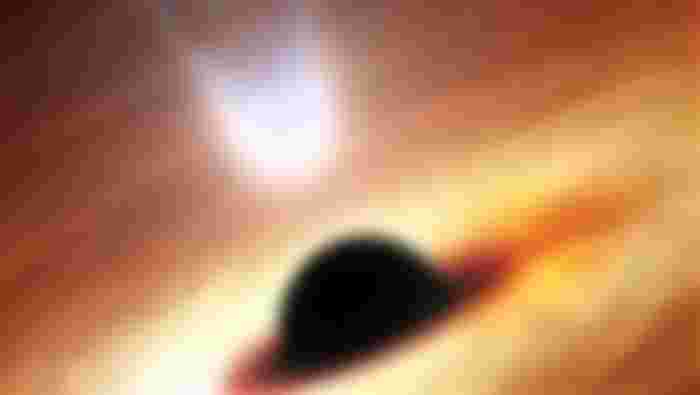
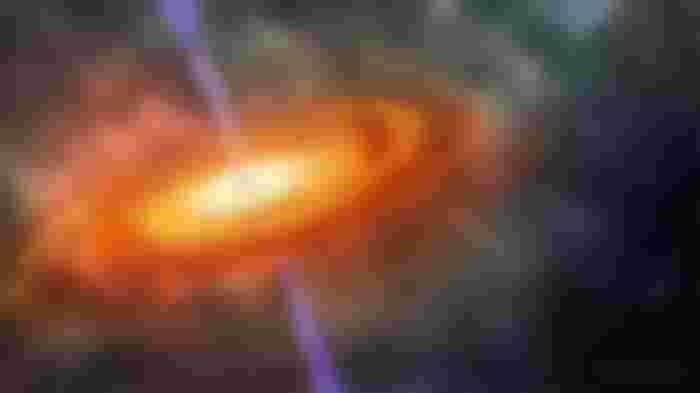
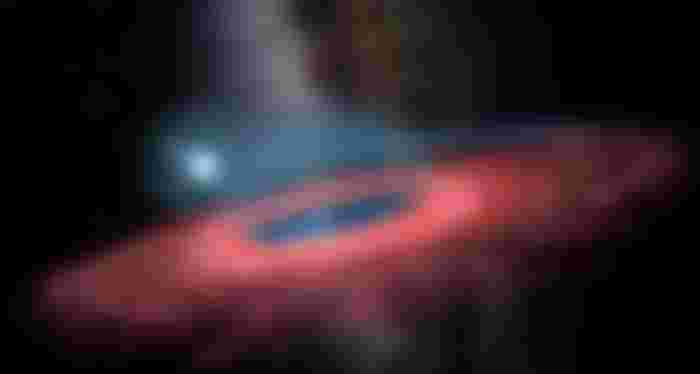
Brilliantly written dear